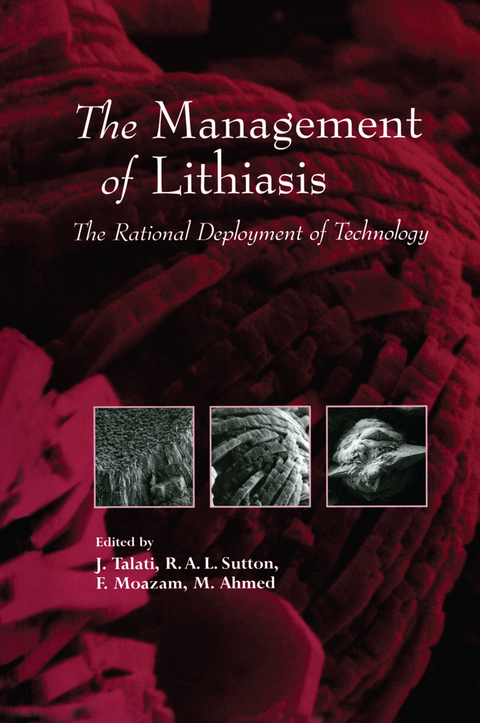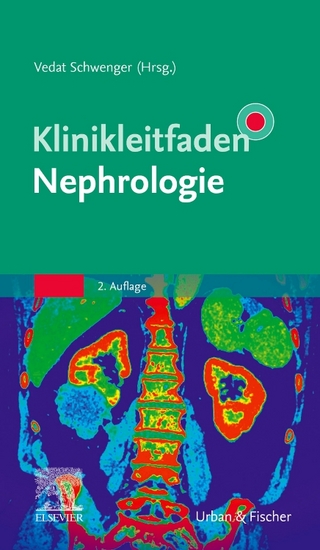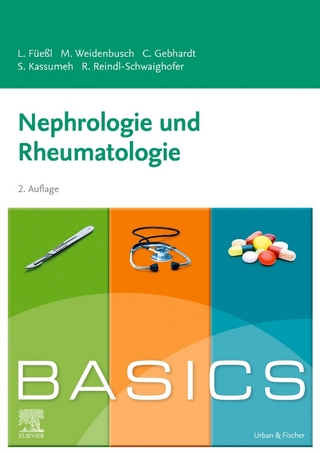
The Management of Lithiasis
Springer (Verlag)
978-94-010-6270-1 (ISBN)
Section I: Epidemiology and Aetiology of Urinary Tract Calculi.- 1 Urolithiasis: Composition, symptomatology and pathology.- 2 Radiology in urolithiasis.- 3 Epidemiology of urolithiasis in Pakistan.- 4 Urolithiasis in the Middle East: Epidemiology and pathogenesis.- 5 Epidemiology of urolithiasis in the Western world.- 6 Metabolic and dietary risk factors for urolithiasis.- 7 Oxalate and urolithiasis.- 8 Familial clustering and sex incidence of urolithiasis.- Section II: Choices in the Management Of Urinary Tract Calculi.- 9 Decisions! Decisions.- 10 Advantages and hazards of open surgery.- 11 Choices, limitations, hazards and value of technology in the treatment of lithiasis.- 12 Bioeffects of shock waves: An overview.- 13 Laser fragmentation of urinary calculi.- 14 ESWL today: Spectrum of stone disease treated on the extracorporeal lithotriptor.- 15 Manageent of renal stones by operation.- 16 ESWL for kidney stones and options for calyceal calculi.- 17 Percutaneous nephrolithotomy for renal stones.- 18 Management of staghorn calculi.- 19 Management of ureteric stones.- 20 Clinical results of laser fragmentation of ureteric stones.- 21 Management of vesical and urethral stones.- Section III: Enhancement of Efficacy and Safety of Treatment.- 22 Patients at risk for excessive post-ESWL bleeding.- 23 Patients with pacemakers.- 24 Safeguarding foetus and gonads.- 25 Other high-risk patients.- 26 The role of ESWL in patients with leprosy and stone disease.- 27 Factors determining need for multiple treatments on the Dornier HM.- 28 Factors determining need for multiple treatments: Decisions based on stone bulk, composition and acoustic efficiency.- 29 Prevention of steinstrasse.- 30 Urinary tract infection, stones and ESWL.- 31 The judicious use of stents.- 32 Protection ofhospital personnel.- Section IV: High Technology at Affordable Cost.- 33 Introduction: High technology at affordable cost.- 34 The economics of stone disease therapy: An economist’s views.- 35 Selecting a lithotriptor: Hospital perspectives.- 36 Lithotriptor sharing.- 37 Cost factors in equitable care.- 38 Commencing and expanding lithotripsy services.- 39 Financing the lithotriptor.- Section V: Prevention of Urinary Tract Calculi.- 40 Introduction: Prevention of urinary tract calculi.- 41 The residual calcular fragment: A risk factor for recurrent stone disease.- 42 Primary hyperparathyroidism in urinary tract stone disease in Pakistan and the West.- 43 The role of diet in the prevention of urolithiasis.- 44 Systematic follow-up of patients with recurrent nephrolithiasis: A guide for the practising urologist.- 45 Follow-up of urolithiasis patients: A guide for urologists in developing countries.- Section VI: Paediatric Urolithiasis.- 46 Urolithiasis in children.- Section VII: Biliary Tract Stones.- 47 ESWL in gallstone therapy: History, current status and expectations.- 48 Current management of gallstone disease: Perspective from a developing country.- Epilogue.- Appendix: Non-visual laser Lithotripsy T. K. Shah, Z. X. Jiang, G. W. Watson.
| Reihe/Serie | Developments in Nephrology ; 38 |
|---|---|
| Zusatzinfo | XIX, 352 p. |
| Verlagsort | Dordrecht |
| Sprache | englisch |
| Maße | 155 x 235 mm |
| Themenwelt | Medizinische Fachgebiete ► Innere Medizin ► Nephrologie |
| Medizin / Pharmazie ► Medizinische Fachgebiete ► Urologie | |
| ISBN-10 | 94-010-6270-6 / 9401062706 |
| ISBN-13 | 978-94-010-6270-1 / 9789401062701 |
| Zustand | Neuware |
| Haben Sie eine Frage zum Produkt? |
aus dem Bereich


